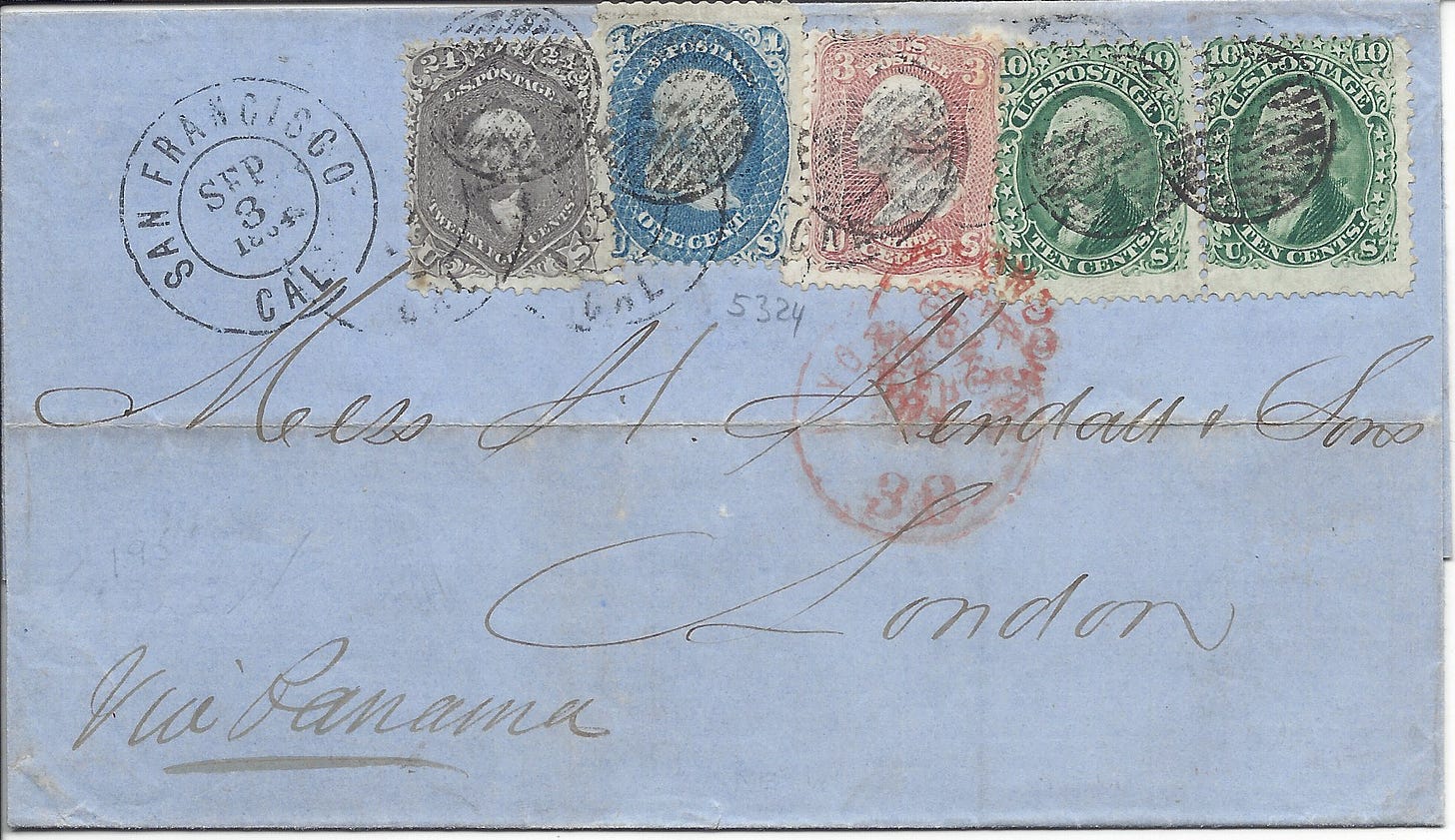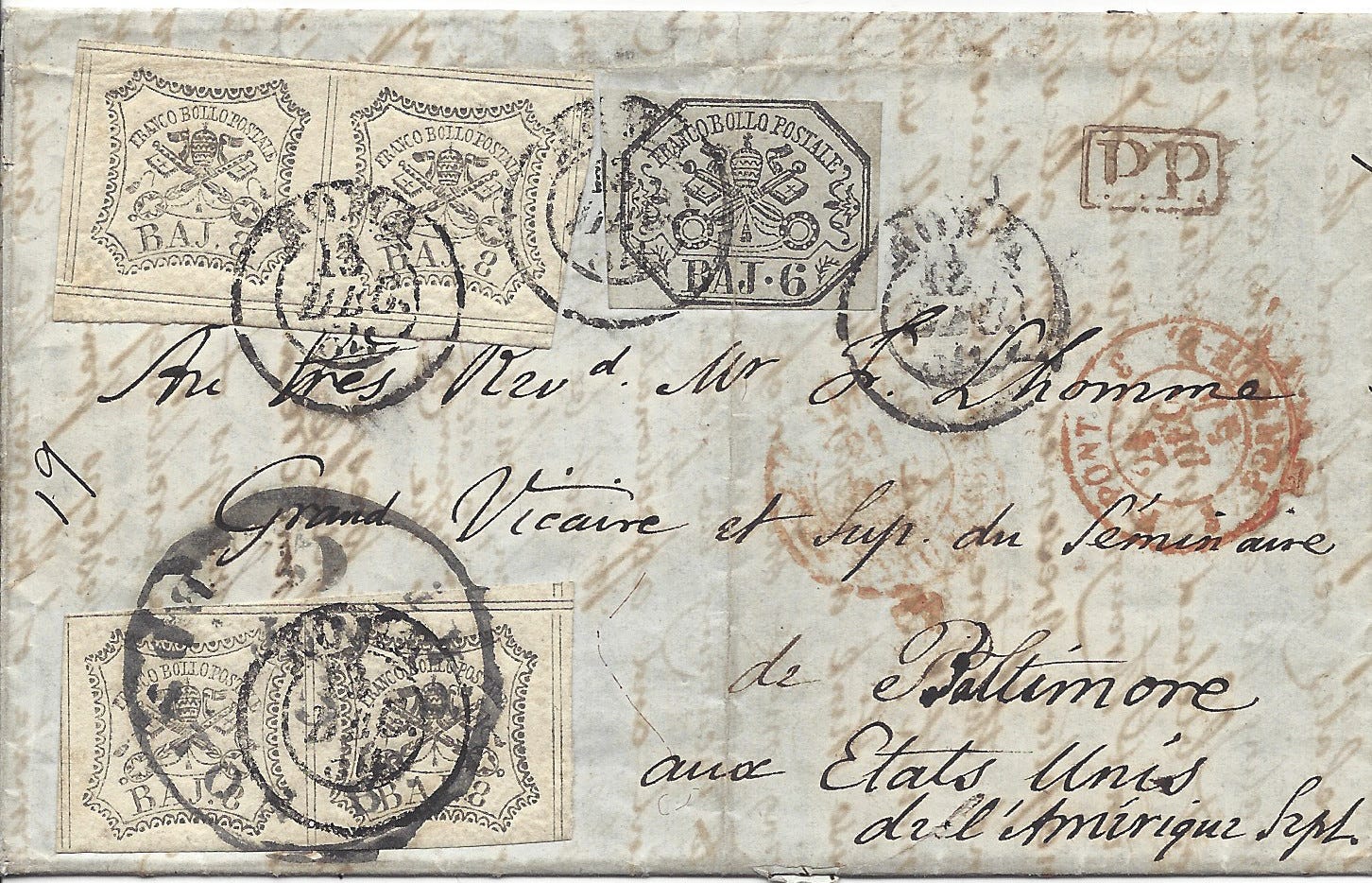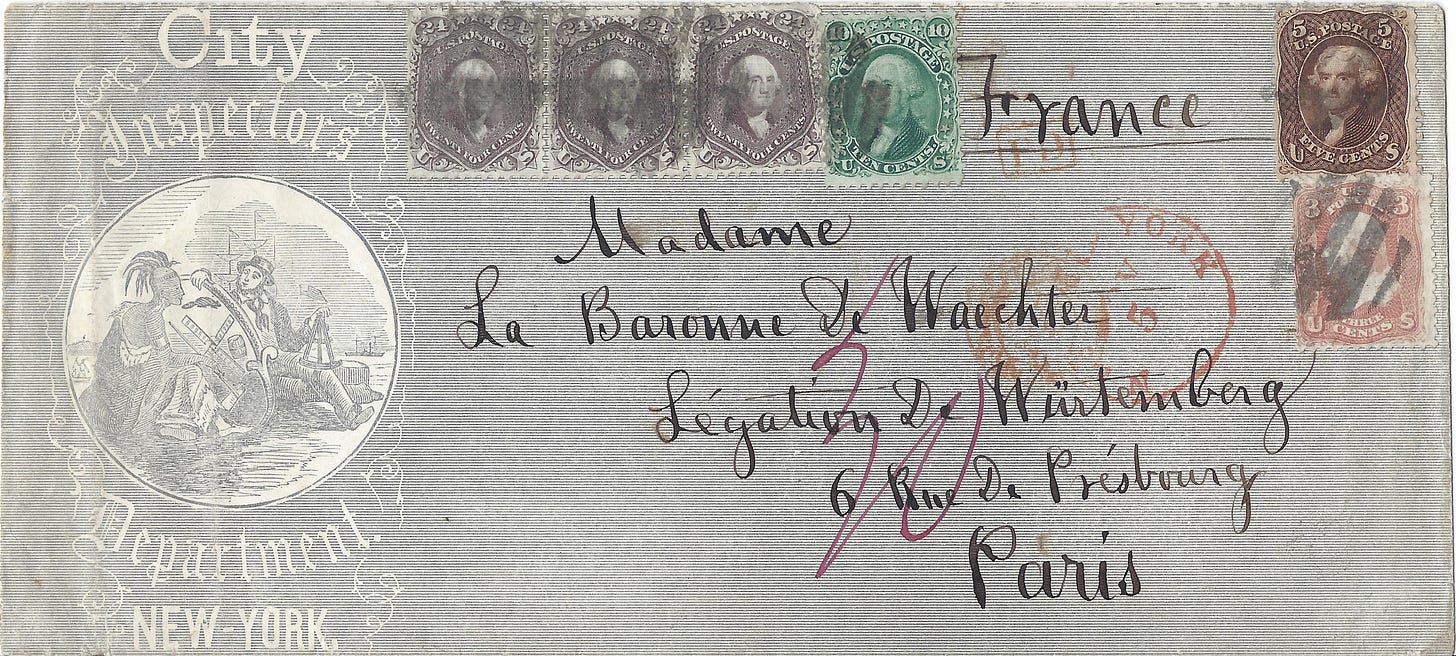Welcome to Postal History Sunday!
Postal History Sunday is a place where I share a weekly writing focused on the postal history hobby I enjoy. I do my best to make each article accessible to readers who may have little to no knowledge of postal history while still including details that appeal to persons with expertise in the subject. Everyone is welcome here, especially if you’re interested in learning something new!
If you don’t want to read more of this, but want to get a flavor of Postal History Sunday, I’ve got a few recommended posts to get you started - just scroll down.
Postal History Sunday started as a pandemic project in August of 2020. I saw this as an opportunity to provide a service to others who were struggling through a difficult time of enforced isolation. I also felt that this could be my contribution to helping people to see the postal history hobby and topic as accessible and welcoming. Members of groups often spend so much of their time talking to each other that they forget to open the circle up to new members. Well, consider yourself welcomed!
Since its inception, I was able to post every Sunday on both the Genuinely Faux (est 2008) and GFF Postal History (est 2017) blogs on Blogger. Beginning in early 2024, I moved Postal History Sunday to Substack in an effort to make it easier for interested readers to find and access these articles.
I appreciate receiving feedback and I understand that, while I have a fair amount of expertise, I will always have more to learn. If you see an error, I appreciate resources that help me correct and verify information. I also invite any questions you might have and will take suggestions for future topics to cover.
What is postal history?
Postal historians are typically collectors of covers (old envelopes, folded letters, etc) that were carried by various postal services from one place to another - sometimes successfully, sometimes not. We tend to refer to these items as “postal history,” even if that isn’t technically correct (for those of you who want to make this an academic subject).
Postal historians often see each cover as a puzzle (or part of a larger puzzle) that we have an opportunity to solve. How did the item get where it was going? Did something odd happen along the way? How much was paid to get that letter to where it was going? And, we like to try to figure out as much as we can by looking at the clues provided by each item carefully.
A postal historian concentrates on several things. We study the rates of postage required to get an item from place to place. We enjoy figuring out the routes these items traveled to get where they were going. We learn to read covers (postal history items) by looking at and learning about the markings that can be found on them.
This is the most common definition used in the hobby: postal history is about rates, routes and markings.
However, I tend to expand my own definition by including details about the modes of transportation used to carry the mail and I include research into the regulations and workings of the postal services that carried the mail.
Adding in some social history too
Many postal history items have wonderful stories that go beyond the standard postal history definition. Rather than ignore those stories, I like to include them and create a more complete story that surrounds a given item. For example, we can determine both the writer and recipient of this letter shown above. Both of them were important members of the Sulpicians, a Catholic order. You can get a taste of how we can explore the postal history surrounding an item along with the surrounding social history by going to this article.
Sometimes the social history is the most interesting, and important, thing to consider. This article features items mailed from inhabitants of a couple of the World War II Japanese internment camps. The postal history for these items is, for the most part, fairly common - except where it relates to the special circumstances surrounding these camps.
Often, the lines blur, and that’s okay. I concern myself the most with the story that surrounds an item (or items). It can be very interesting to see where that takes me.
Postal history is a big topic area
There is plenty of room to play, when it comes to postal history. And, in my opinion, no one can be an expert for every nook and cranny that could be included under the postal history umbrella.
My personal strength lies in the 1850-1875 time period. I am more familiar with United States and European postal history, especially during that time period. And, as if that sort of specialization wasn’t enough, I really know a lot about postal history items that have the 24-cent stamp from the US 1861 issue on them.
That might explain why many of my articles feature the items that they do. But, don’t worry, I am always interested in learning more and I do my best to write about things outside of my comfort zone.
A few suggested readings to get you started
Here are a few Postal History Sunday entries that you might enjoy:
While this list only goes to eleven, there are a couple hundred (as of June 16, 2024) articles already available to read in Postal History Sunday. Put your troubles aside for a little bit, learn something new, and I hope you have a fine remainder of your day and an excellent week to come.
What does subscription do for you?
In the past, persons interested in Postal History Sunday couldn’t be notified when a new post was available. With a subscription, you will get an email each week with a new article. And, if you subscribe you will also get full access to publication archives.
A word about paid subscriptions
If you are willing to provide me with some support for my efforts to produce a quality weekly Postal History Sunday article, I would be grateful. However, I do not want to place the weekly articles behind a paywall. So, you can subscribe at no cost, or you can subscribe by offering up a few dollars to support the effort. You are welcome to be a part of this regardless.
Let me try to say this more clearly. Writing Postal History Sunday does take real time and real effort on my part. I have no editor. There is no research team. There is only me, and the weekend can come up on a person awfully quick-like! If you like what you see with Postal History Sunday and you can afford to do so, make a pledge to support this work.
And a word about pledges versus subscriptions
When you subscribe, Substack will ask you to make a pledge (or do a paid subscription when I turn that on). You may, of course, opt to make no pledge or select a free subscription - which is perfectly fine! Or, you can pledge monthly and yearly amounts - I selected the lowest dollar amounts allowed by Substack for these options to keep it as accessible to all persons as I can. And, if you want to support this work as a Founder, you can opt for the higher yearly amount. Please note, you can change pledge amounts at any time and in any direction.
A pledge amount is just that. You are indicating interest in supporting this work with some financial support. When I decide it is time to activate pledges to subscriptions, you will be notified by Substack and asked to honor that pledge (though you could also opt out at that point). And, of course, you can change your subscription level at any time in any direction.
In the interest of full disclosure, Substack will take a percentage of subscriptions to pay for their services. However, I feel the amount they are asking for is very reasonable. The rest of the subscriptions will come to me as compensation for my creative work.
When I activate the paid subscription option, I expect to add content beyond the weekly articles. This content would be for paid subscribers only as a “thank you” for the support. The frequency and nature of this content is yet to be determined and I intend to keep it modest so it does not impact the quality of the weekly output!
Thank you for your support and see you Sunday.




